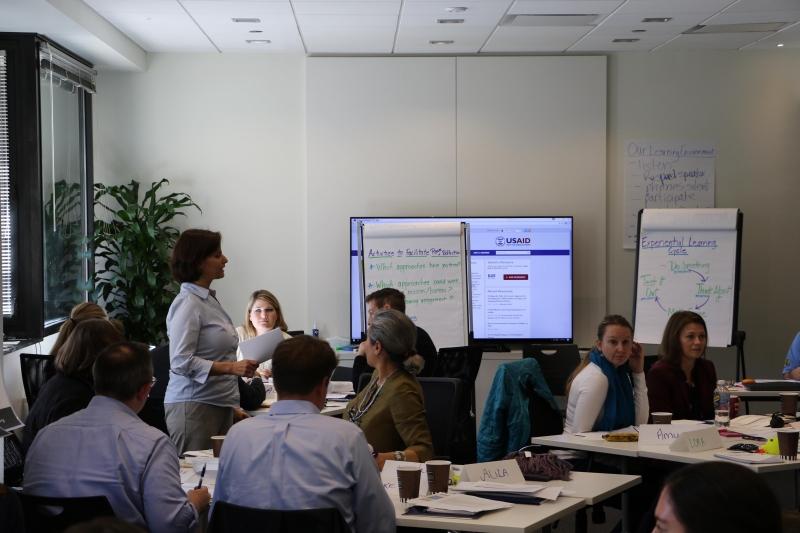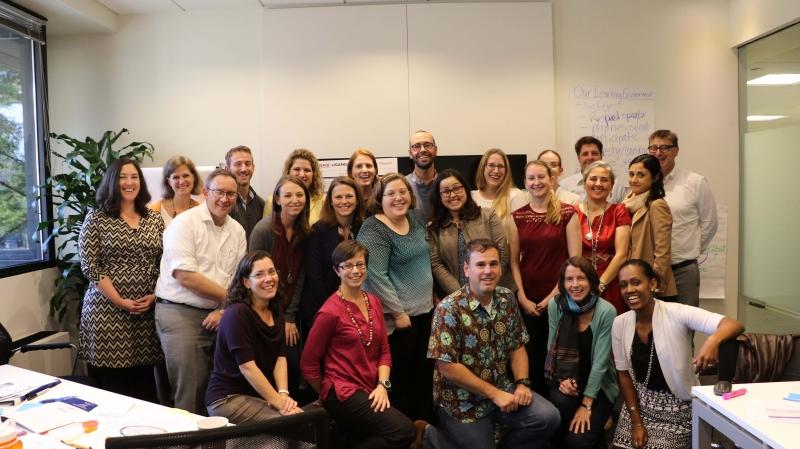I’m [Not] Drinking the CLA Kool-Aid: A New Program Officer’s Perspective on CLA
As a new Foreign Service Officer (FSO) with USAID, there are a variety of on-the-job rotations with different offices, trainings, and other learning opportunities that will help me to be a better development professional before heading to the field. Unfortunately, the options are often overwhelming! I’m told I should aim for a balanced diet of acronyms—PFA, PDM, PPL, and a dash of TDY—most of these acronyms are meaningless to those outside USAID, it feels like alphabet soup to me too at times. I need to build a support network and learn, learn, learn! Basically, there is a lot to do during my time in DC and many ways to do it.

With so many choices, I decided to do a rotation with USAID’s Bureau of Policy, Planning and Learning on the Collaboration, Learning, and Adapting (CLA) team, and was fortunate to begin my week with them as a participant in their new training course: “Collaboration, Learning and Adapting for Better Development Programming.” Here are some of my main reflections after the training.
The CLA framework can help us work smarter
Let me preface by saying I have been a bit of a CLA “fangirl” since first learning about it while working in the program office in Tanzania in 2015. I loved the idea of a framework emphasizing learning and helping a mission to make time to adjust course based on what is learned. I liked thinking about how our knowledge management, monitoring and evaluation, and implementing mechanisms can work together to create a learning organization. I bought into the idea of CLA, which I affectionately called “the claw,” long before CLA training started on October 11th.
When the CLA course opened up in October, it looked like a good opportunity to learn about CLA more formally. As a new FSO, I am excited to think about these concepts alongside learning the elements of a program officer’s role and believe CLA will help me work smarter in the long run. When thinking about project design and many other aspects of our work, I believe a small investment in CLA can produce dividends in efficiency and effectiveness. The components of the CLA framework are not necessarily new to USAID, but the CLA framework adds intentionality in connecting these pieces and a sharing across missions of what has worked and what hasn’t.
CLA champions can exist at any level
Beyond learning the actual CLA framework and how it relates to the Program Cycle, a large takeaway from training for me was CLA champions can exist at any level. While buy-in from leadership can certainly be a catalyst for adopting the framework and creating an effective enabling environment, employees at any level can benefit from applying the concepts to their individual or team’s work. The training gave good strategies for integrating CLA into various areas of work. It could be as simple as a pause and reflect moment about how team meetings are contributing to a goal, or an After Action Review (AAR) after an event. With leadership support, a mission could even complete an overhaul of the portfolio review format to make it more learning and adapting focused. The training also emphasized that there are many ways to integrate CLA that are yet to have been thought of or tried.
Change comes in increments
A key point of tension around CLA is a feeling that there isn’t enough time for it. Overall, I have to agree, there isn’t enough time to apply every section of the framework perfectly today, change must come in increments. In my opinion, if champions of CLA, or even just dabblers, want to integrate CLA principles and practices into their work, they should start with looking at what they are already doing. For example, a portfolio review is a required pause and reflect moment, but how can we do them better? How are we applying the learning that comes from them and what kind of change does this produce? By starting with what we are already doing, CLA practices become more manageable to those who worry they don’t have enough time.

Image: CLA Training Cohort, October 2016
We’re actually not drinking the Kool-Aid
On the first day of training, I texted another C3 officer that “I drank the CLA Kool-Aid” when explaining the training I was starting. It felt almost like an apology for being interested in CLA, maybe because I already felt that some people view CLA as redundant or “uncool”. I thought it was funny when I walked into training and saw a large CLA Kool-Aid cartoon man and then when we literally toasted with Kool-Aid at the end of training. While there is some element of conversion when buying-in to CLA, I would argue the figure of speech doesn’t apply- we don’t drink the Kool-Aid. Those who decide to use to CLA are not “blindly following their peers to their doom,” but instead thinking critically about development practice and perhaps even going against the grain. Addressing the components of CLA is hard, requires resources, and despite what the colorful handout might suggest, there are no easy answers or prescriptive solutions. Moreover, in some ways CLA is new packaging for concepts that most would already agree are best practices. It is a cultural shift, but not as big a shift as some might think.
I feel grateful to have been exposed to CLA concepts early in my career at USAID and recommend new employees consider taking the course, however I am sure that staff at many experience levels would benefit. The CLA course is now offered 3-4 times per year and may start being offered regionally. As someone who sat in on the AAR of the October training, I can tell you the CLA team practices what they preach and will continue to iterate and adapt the training based on feedback and new practices they are seeing. Keep an eye out for the newest iteration coming soon!



